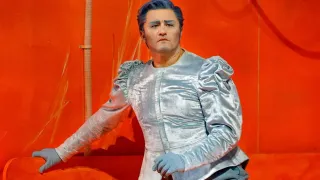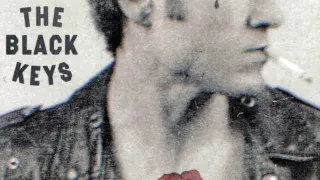July 10, 2016
A Clockwork Kubrick
Sura Wood READ TIME: 5 MIN.
On his 13th birthday, Stanley Kubrick received a fortuitous gift from his father: his first camera. For that, he and the world owe Pere Kubrick a debt of thanks.
A notorious perfectionist whose exacting standards and exhaustive research contributed to a limited output of 16 films over five decades, Kubrick is widely regarded as a visionary filmmaker ahead of his time technically and philosophically. He tailored genres for his own purposes and with each project reinvented his style. One need only to look at films as varied as the dystopian "A Clockwork Orange" (1971); "2001: A Space Odyssey" (1968), which aside from winning an Oscar for Special Effects, has been cribbed from by an untold number of directors; "Dr. Strangelove or: How I Learned To Stop Worrying and Love the Bomb" (1964), a wicked satire of Cold War paranoia with Peter Sellers in multiple roles; and "The Shining" (1980), a cult horror classic that continues to be analyzed to the nth degree by fanatic fans.
While not all of Kubrick's movies were masterpieces or to everyone's taste - they can be glacially slow, cerebral and easier to admire than to love (think "Barry Lyndon") - one could count on their visual beauty and artistic integrity. A meticulous, obsessive researcher, the vast archives Kubrick maintained at his London home and workspace until his death in 1999 have provided a wealth of source material for "Stanley Kubrick: The Exhibition," the first comprehensive retrospective of his life and work. The touring show, containing over 800 objects from his estate, opened at the Contemporary Jewish Museum last week.
So what's Kubrick doing at a Jewish museum, you ask? True, he grew up in a middle-class Jewish family in the West Bronx in the 1930s, where he met several key future collaborators. It's debatable whether his work reflects his Jewish heritage, except in the most general terms; he was an agnostic, and positioning him as a Jewish filmmaker is a bit of a stretch. Still, one can't fault CJM for endeavoring to attract a wider audience with pop culture shows that have the broad appeal of this one.
Many in that audience will be familiar with Kubrick's most iconic titles, but make no mistake: this exhibition is a film buff's paradise. It's packed with movie-making arcana and emphasizes the director's approach to shooting, writing, editing and scoring, all of which he oversaw, rather than delving into personal psychology. The show, which takes up the entire second floor of the museum and is divided into sections examining all of his films (13 features and three docs), follows his development with numerous production stills, on-set and behind-the-scenes photographs, shooting schedules and continuity docs, film clip compilations, the director's thoughts on various projects collected in notebooks one can flip through, annotated scripts and questions in Kubrick's own hand, props, costumes like the gorilla-like "Moonwatcher" body suit from 2001, production design sketches, and storyboards such as a modernist renderings in color for Spartacus, finely executed by none other than Saul Bass; a Roman tunic and warrior uniform from the film are on mannequins nearby.
Also here is his correspondence with Vladimir Nabokov, author of the novel and screenplay for "Lolita." A letter to Kubrick from the "Christian Action" group protests the "deleterious effect" of Lolita on the moral fiber of society and asserts it shouldn't be made. Tough tootsies: It had already been shot. It was Nabokov who chose Sue Lyon for the teenage temptress, and tiny color pictures of her by Bert Stern play up her woman-child quality on a strip of slides that can be viewed through a magnifier. The background in the Lolita section is painted cherry red. Enough said.
Kubrick started as a photographer, selling his first image at age 16 to Look magazine, and became a staff photographer the following year. Suffice it to say the boy was a natural, and over 900 of his pictures of boxers, Frank Sinatra, Montgomery Clift and other subjects were published during his tenure (1946-51). One of those black & white photographs of a tense moment before a swim meet, competitors poised at the edge of the pool, steam rising from the surface of the water, is vintage Kubrick.
His first feature and first war film, "Fear and Desire" (1953), an early effort he was dissatisfied with and later tried to pull from circulation, was made outside of a studio, unusual at the time and an early example of the fierce creative autonomy that drove his career. He borrowed $40,000 from his uncle to fund his next project, "Killer's Kiss" (1955), a gangster noir that bears his signature long tracking shots, probably influenced by Orson Welles and Max Ophuls; handheld camerawork; scrupulous attention to set design; and strategically planned action sequences. An alcove exploring "A Clockwork Orange," based on Anthony Burgess' satiric novel about violent youth culture in a not-so-futuristic England, where the state employs aversion therapy to reform Alex (Malcolm McDowell), a teenage thug, contains plastic models of the Korova Milk Bar Maids; lewd table-tops in the shape of kneeling naked women; a mannequin in Alex's white jumpsuit, trademark black derby and cane, positioned outside the gallery entrance, waves one inside like a carnival barker.
Kubrick could be ponderous, never more so than in his final film, "Eyes Wide Shut," a portentous snoozer that he considered his most important work. Adapted from Arthur Schnitzler's erotic novella of sexual desire and decadence in early 20th-century Vienna, Kubrick's updated, New York-set version with Tom Cruise and Nicole Kidman got lost in translation in more ways than one, and flopped in the U.S. and England. Though intended as a vision of a modern hell and bourgeois ennui, when one encounters a scene of a chanting voluptuous women in nothing but thongs, spike heels and Venetian masks, the temptation to case the exits and flee is irresistible. The masks, with black feather plumage, decorated in gold, or with three faces, were the high point, except for a brief turn by the late Sydney Pollack. Kubrick suddenly died in 1999, shortly after its premiere. A tantalizing concluding section looks at several unfinished projects one wishes he could have made: "Napoleon"; "The Aryan Papers," a Holocaust drama whose timing conflicted with the release of "Schindler's List"; and "A.I.," which Spielberg eventually directed, based on Kubrick's preparatory work.
This fine exhibition (through Oct. 30) notwithstanding, his true legacy lies in the films he left behind. In conjunction with the show, "Kubrick in Black & White," a series highlighting his works from the 1950s and early 60s, will be at YBCA, July 15-31 (ybca.org); Kubrick in Color runs Aug. 12-Sept. 24 at the Alamo Drafthouse Cinema (drafthouse.com/sf).







